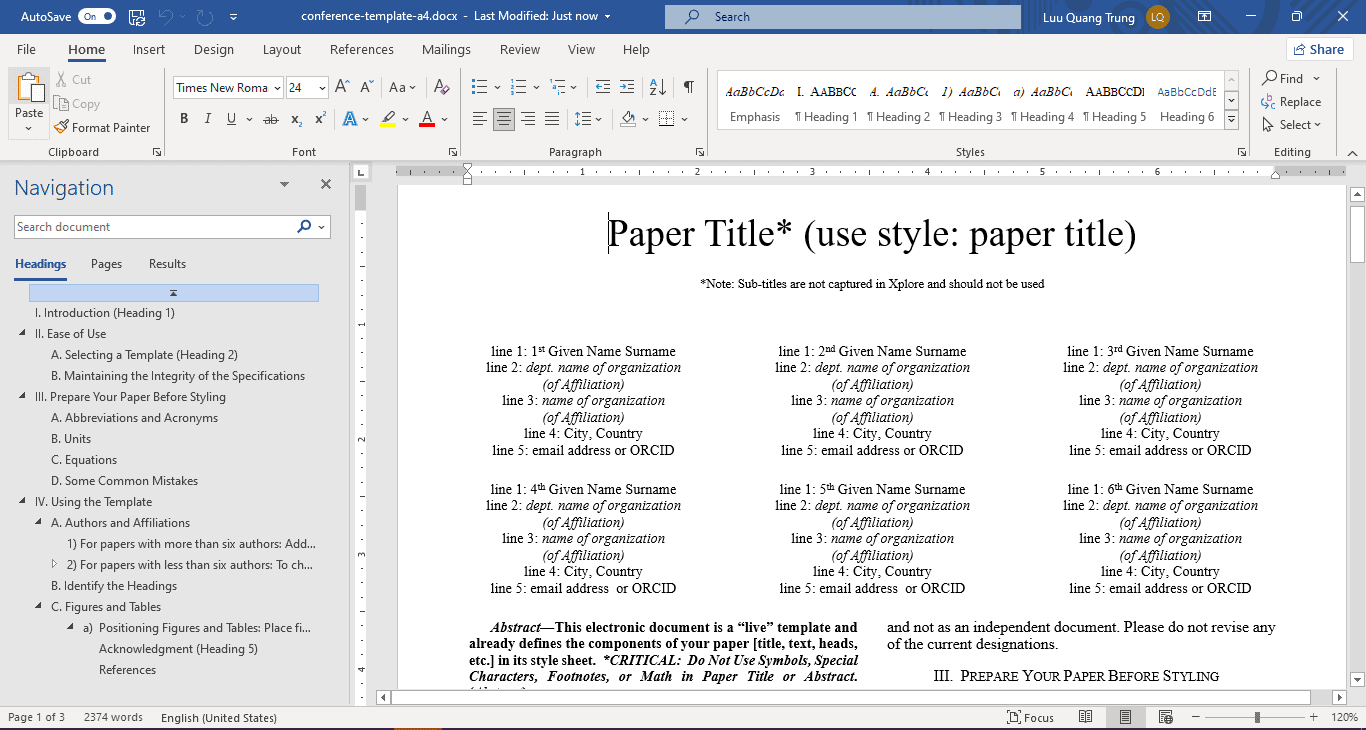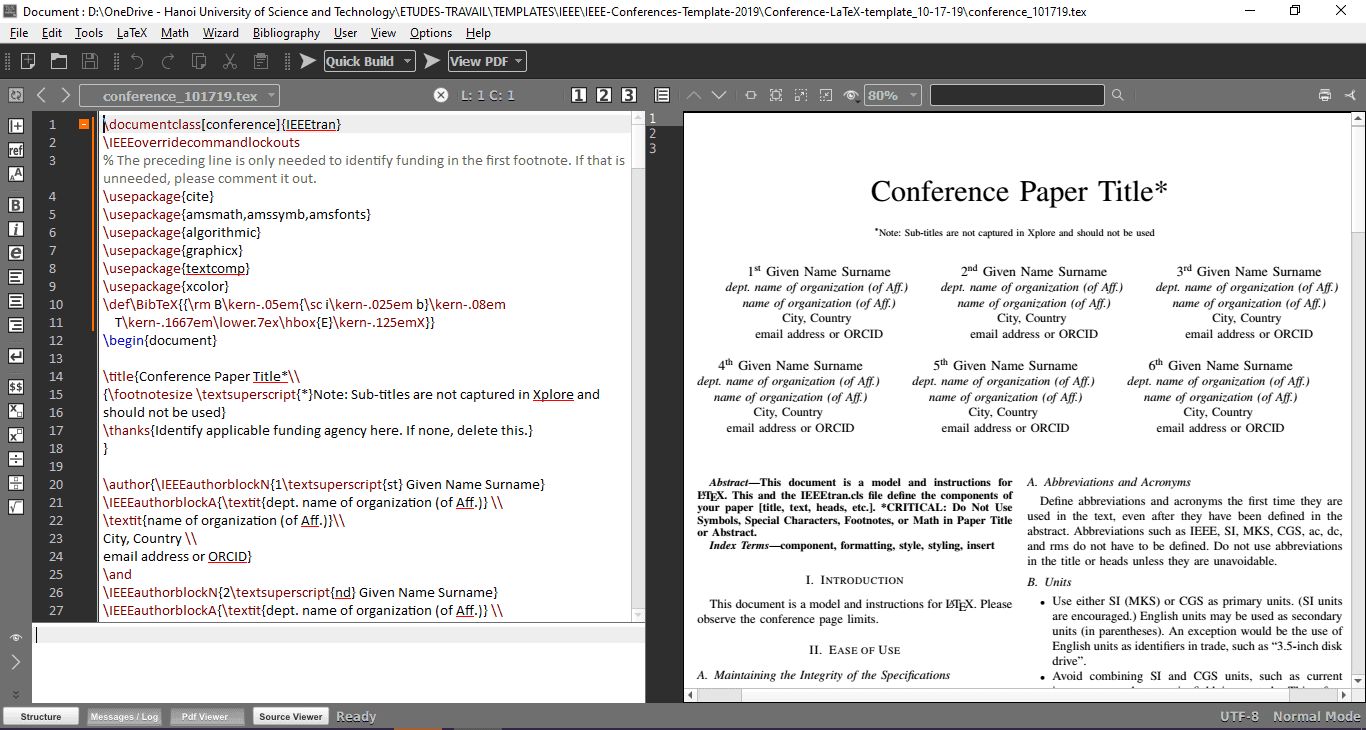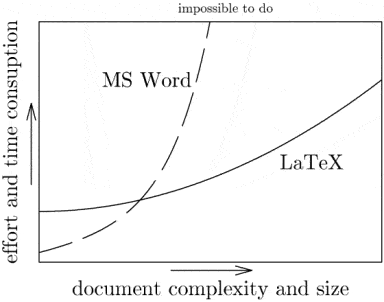1. Introduction
Microsoft Word and LaTeX have been fundamental tools for crafting and presenting our written content.
In this tutorial, we’ll discuss the differences between Word and LaTeX regarding user interface, use cases, collaboration, and version control features.
2. Software
Two products of Microsoft offer Word editor:
- Microsoft Word: This is the official software developed by Microsoft for creating, editing, and formatting documents. It’s part of the Microsoft Office suite and is available for both Windows and macOS operating systems
- Microsoft 365 (formerly known as Office 365): This subscription-based service provides access to the latest version of Microsoft Word along with other Office applications, cloud storage, and various productivity and collaboration tools
To work with LaTeX, we’ll need a TeX distribution and a LaTeX editor:
- TeX distribution: This includes the LaTeX typesetting system as well as various tools and packages. Some popular TeX distributions include Tex Live and MikTeX
- LaTeX editor: While it is possible for users to create LaTeX documents using a plain text editor (e.g., NotePad or NotePad++), specialized LaTeX editors provide a more user-friendly interface with features like syntax highlighting and error checking. Some LaTeX editors include TeXShop (for macOS users); TeXworks, TeXstudio, LyX (for both Windows and Linux users); or Overleaf (an online and collaborative LaTeX editor that doesn’t require local software installation)
3. User Interface
3.1. Word
Microsoft Word’s user interface is renowned for its intuitive design and ease of use, making it one of the most popular word-processing applications worldwide. Its user-friendly ribbon interface neatly organizes a plethora of powerful features into easily accessible tabs, enabling users of all levels of expertise to create and edit documents effortlessly. The following figure shows the screenshot of a Word template provided by IEEE for conference proceedings:

Additionally, its robust spell-check and grammar-check capabilities and real-time collaboration features through cloud integration further enhance its usability. In most cases, it serves as a broad category encompassing all word-processing software that immediately displays the final output. Having this characteristic, Word is usually called a What You See Is What You Get (WYSIWYG) editor rather than requiring initial file processing.
This may seem intuitive and user-friendly for beginners at first, especially when you use Word for elementary purposes like typing a document, making a list, formatting, or choosing fonts. However, when it comes to editing a large document or taking an uncommon command, e.g., creating a table of references or an index list, users tend to Google to figure out how it could be done.
3.2. LaTeX
On the other hand, LaTeX’s user interface is distinct from conventional word processors, as it relies on a markup language for document creation rather than a graphical interface. While its learning curve may appear steep for newcomers, it offers a unique level of control and precision in typesetting documents. The following figure shows the screenshot of TeXmaker opening a LaTeX template provided by IEEE for conference proceedings, which has the same format as the above Word template:

LaTeX may be complicated for beginners, and its ease of use only becomes apparent once users become familiar with its syntax and commands. It excels in handling complex mathematical equations, bibliographies, and multi-lingual documents, making it a favorite among researchers, academics, and technical writers.
The famous (yet unknown source) figure below shows the learning curve for users of Word and LaTeX. These curves show how LaTeX becomes easier to use relative to Microsoft Word as the task becomes more complex. On the contrary, for a simple document like taking notes, a simpler tool like Word (or even Notepad) is easier for users:

To sum up, while it may not be as immediately intuitive as WYSIWYG editors like Word, LaTeX’s power lies in its ability to produce consistently high-quality documents with a minimal margin for error, especially for publications, research papers, and theses. For those willing to invest time in learning its intricacies, LaTeX rewards them with unparalleled document typographic control and professionalism.
4. Use Cases
4.1. Word
Microsoft Word is commonly known as a general-purpose document creation software. With its suitability for most office tasks, Word is widely used in both schools and offices. Collaboration and real-time editing in Microsoft Word have become significantly more accessible and efficient thanks to its cloud-based features and collaborative tools. Microsoft Word’s collaboration and real-time editing features have made it a versatile tool for teams and individuals who need to work together on documents, making it easier to create, review, and finalize content efficiently and effectively.
4.2. LaTeX
Unlike Word, LaTeX is generally considered as a typesetting system commonly used for producing documents with high-quality typography, particularly in fields like academia, research, and technical writing. Because of its ability to handle complex mathematical equations and references, LaTeX is often preferred by scientists and researchers.
Furthermore, graduate students often use LaTeX to format their theses and dissertations. Many universities provide LaTeX templates for students to ensure compliance with formatting requirements. Since it has great ability in writing, controlling page layout, fonts, formatting, and ensuring a professional and consistent appearance, LaTeX is also an excellent tool for publications with complex formatting requirements.
The following figures show the output of Word:
 And now LaTeX for the same text:
And now LaTeX for the same text:

We can see the mathematical symbols produced by LaTeX are higher resolution than that of Word.
5. Collaboration and Version Control
5.1. Word
Collaboration and version control in Microsoft Word has become more streamlined and efficient with the integration of cloud-based tools and collaborative features. Real-time collaboration via Microsoft 365 has enabled users to simultaneously access and work on the shared document.
Also, collaborators can leave comments and suggestions on the document. These comments are visible to everyone, and you can reply to them, accept or reject suggestions, and have threaded discussions. Moreover, Word supports real-time co-authoring, where multiple users can work on the same document simultaneously without conflicts. This ensures that all changes are automatically incorporated into the latest version.
5.2. LaTeX
Although collaboration and version control in LaTeX can be achieved using various tools and workflows, they may not be as seamless as Word. To collaborate on a LaTeX document, it’s common to use version control software like Git. Git allows multiple authors to work on the same document, track changes, and merge edits seamlessly. Popular online platforms like GitHub, GitLab, and Bitbucket provide hosting and collaboration features for LaTeX projects.
Alternatively, LaTeX users can use Overleaf as an online platform to do collaborative work with their colleagues. Overleaf also supports various academic templates for scientific journals and conferences of different organizations like IEEE or ACM. Nonetheless, Overleaf may be inconvenient since they limit real-time collaborations (only one collaborator for the free license). Complex tools like real-time track changes or full document history and versioning are only available in the premium features.
6. Conclusion
In this article, we discussed the differences between Microsoft Word and LaTeX.
LaTeX often presents a more challenging initial learning curve when contrasted with Word, which constitutes one of its primary drawbacks. Nevertheless, it provides numerous advantages that can enhance the efficiency, professionalism, collaboration, and scalability of research writing. Researchers, book authors, editors, or journalists are those who benefit most from LaTeX.
In contrast, if you just need to write a simple document, a short letter, or a report, Microsoft Word is a better option for its user-friendly typesetting system. Your choice of software depends on your specific needs, familiarity with the tools, and the type of documents you want to create.